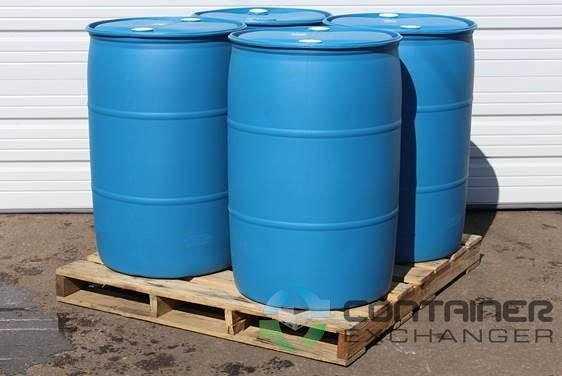Drum containers are a cost-effective storage solution for all kinds of items, including industrial materials, consumer goods, liquids and even food. With 55-gallon drums, you can store large quantities of products in the same container, helping you make the most of your storage space and shipping services. These containers come in all different sizes and are made with different kinds of materials, so you’ll need to do your research before you start storing your goods in a drum. Not all drums will work with certain kinds of goods and materials.
If you’re looking to save money, you can also invest in used containers for your business. Use this checklist to make sure your used drums are up to the task at hand before using them to store or transport your products. Here’s everything you need to keep in mind when utilizing used drums.
1. Check Them for Damage and Cleanliness
Before you begin loading the drum, make sure you’ve thoroughly inspected and cleaned the drum, both inside and out. You should collect as much information about how the drum was previously used, so you can determine if it’s a good fit for your products. If no previous information is available, use caution when opening and cleaning the drum, as there’s always a chance it could contain hazardous materials. According to OSHA, you should inspect the drum for the following:
- Symbols, words or other marks on the drum indicating that its contents are hazardous, e.g., radioactive, explosive, corrosive, toxic, flammable.
- Symbols, words or other marks on a drum indicating that it contains discarded laboratory chemicals, reagents or other potentially dangerous materials in small-volume individual containers.
- Signs of deterioration such as corrosion, rust and leaks.
- Signs that the drum is under pressure such as swelling and bulging.
It’s also a good idea to record the drum type and configurations for opening and closing the drum. Pass this information along to your employees, so everyone knows how to handle the drum with care.
2. Deciding Where and How to Store Your Drums
Once you’ve determined the drum is safe to use, you’ll need to figure out where you’re going to store it. Some drum containers, including those made with wood, metal and fiber, are typically best kept out of the sun and in a dry, room-temperature environment to avoid rust, extreme temperature changes and swelling. Choosing where to store your drum containers all depends on the type of container you choose and what’s being stored inside.
Consider how long you plan on keeping your goods inside the barrel. You may not need to worry as much about the storage conditions if you’re using a drum as a temporary storage solution. But if you’re using the drum for long-term storage, you’ll need to consider the lasting effects of the storage environment, so you don’t have to move the container again down the line.
3. Choosing the Right Drum Container for Your Products
Different products are better suited to different kinds of drum containers. For instance, if you’re transporting or selling food or water, you’ll need to find a food-grade barrel for storage. Steel and metal barrels are best used for hazardous and industrial materials, including solvents, oils and certain types of chemicals. These drums tend to be more secure than other kinds of drums, but they tend to weigh more as well. Plastic and fiber drums tend to weigh less than steel drums. They’re perfect for storing liquids, dry goods and consumer products.

You’ll also have to decide what kind of lid you want for your drums. Some drums come with a bolt or lever lock ring closing system. For bolt lock systems, you’ll need a torque wrench to securely close and open the container. For lever lock ring systems, you don’t need a torque wrench. The bolt lock system is more secure but may not be necessary if you’re not storing or transporting hazardous materials.
You can also find used drums with a bunghole, drain or plug, which will help you quickly dispense your products. These create a liquid-tight seal, but you can open the container easily if you need access to the contents. You can also use cap seals to prevent theft or tampering while your drums are in storage or during transport.
Reuse and Save
Buying a 55-gallon plastic drum is a great way to save money on storage and shipping. Use these tips to make the most of your drum containers, so you can use them for years to come.

